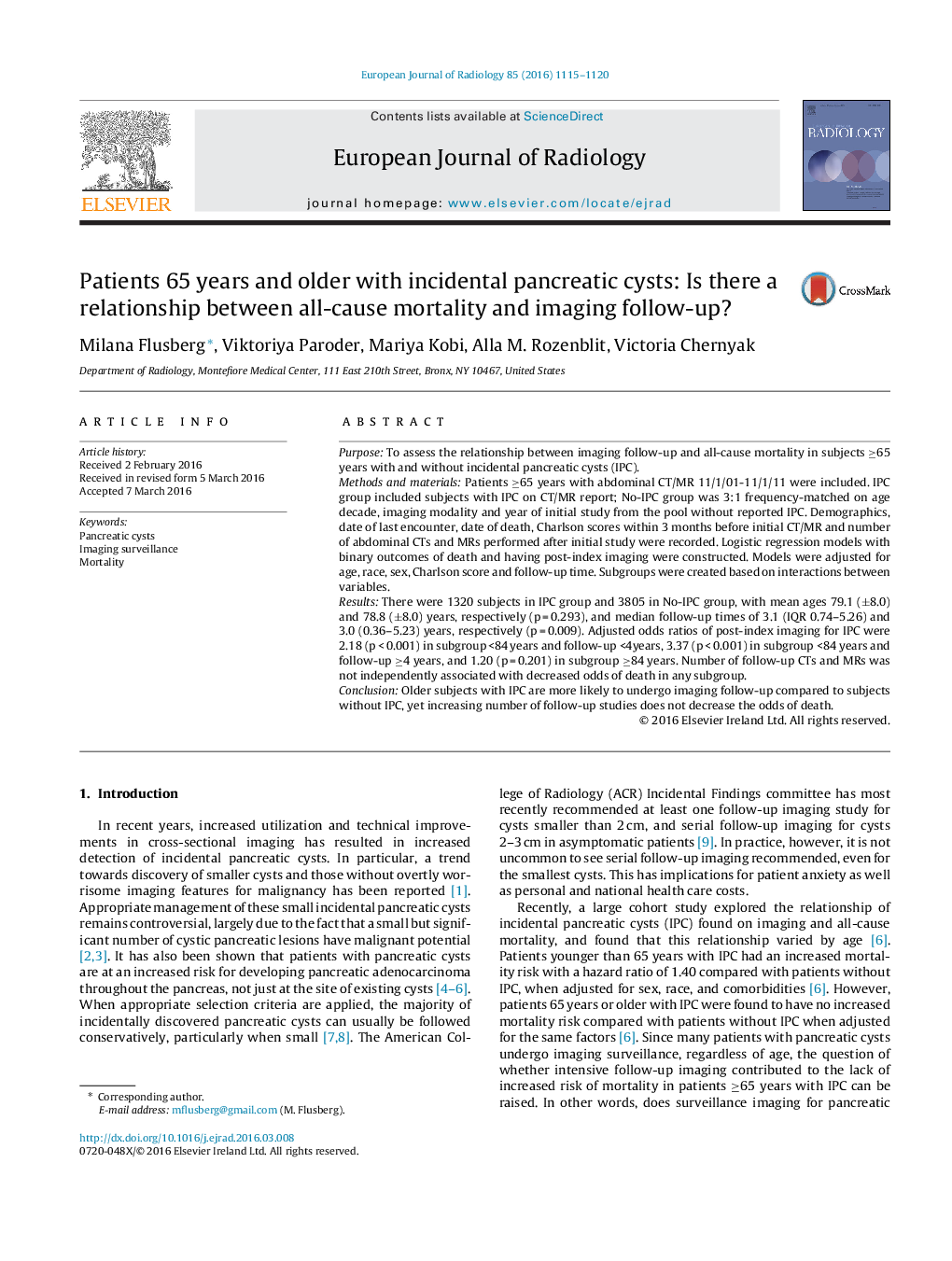| Article ID | Journal | Published Year | Pages | File Type |
|---|---|---|---|---|
| 4224820 | European Journal of Radiology | 2016 | 6 Pages |
•Adults ≥ 65 years old with incidental pancreatic cysts (IPC) don’t have higher mortality risk compared to those without IPC.•Adults 65- 84 with IPC are more likely to have follow-up abdominal CT and MRI than those without IPC.•Increased number of follow up imaging studies is not associated with decreased odds of death.•Fewer surveillance studies may be appropriate for older subjects with small IPC.
PurposeTo assess the relationship between imaging follow-up and all-cause mortality in subjects ≥65 years with and without incidental pancreatic cysts (IPC).Methods and materialsPatients ≥65 years with abdominal CT/MR 11/1/01-11/1/11 were included. IPC group included subjects with IPC on CT/MR report; No-IPC group was 3:1 frequency-matched on age decade, imaging modality and year of initial study from the pool without reported IPC. Demographics, date of last encounter, date of death, Charlson scores within 3 months before initial CT/MR and number of abdominal CTs and MRs performed after initial study were recorded. Logistic regression models with binary outcomes of death and having post-index imaging were constructed. Models were adjusted for age, race, sex, Charlson score and follow-up time. Subgroups were created based on interactions between variables.ResultsThere were 1320 subjects in IPC group and 3805 in No-IPC group, with mean ages 79.1 (±8.0) and 78.8 (±8.0) years, respectively (p = 0.293), and median follow-up times of 3.1 (IQR 0.74–5.26) and 3.0 (0.36–5.23) years, respectively (p = 0.009). Adjusted odds ratios of post-index imaging for IPC were 2.18 (p < 0.001) in subgroup <84 years and follow-up <4years, 3.37 (p < 0.001) in subgroup <84 years and follow-up ≥4 years, and 1.20 (p = 0.201) in subgroup ≥84 years. Number of follow-up CTs and MRs was not independently associated with decreased odds of death in any subgroup.ConclusionOlder subjects with IPC are more likely to undergo imaging follow-up compared to subjects without IPC, yet increasing number of follow-up studies does not decrease the odds of death.
